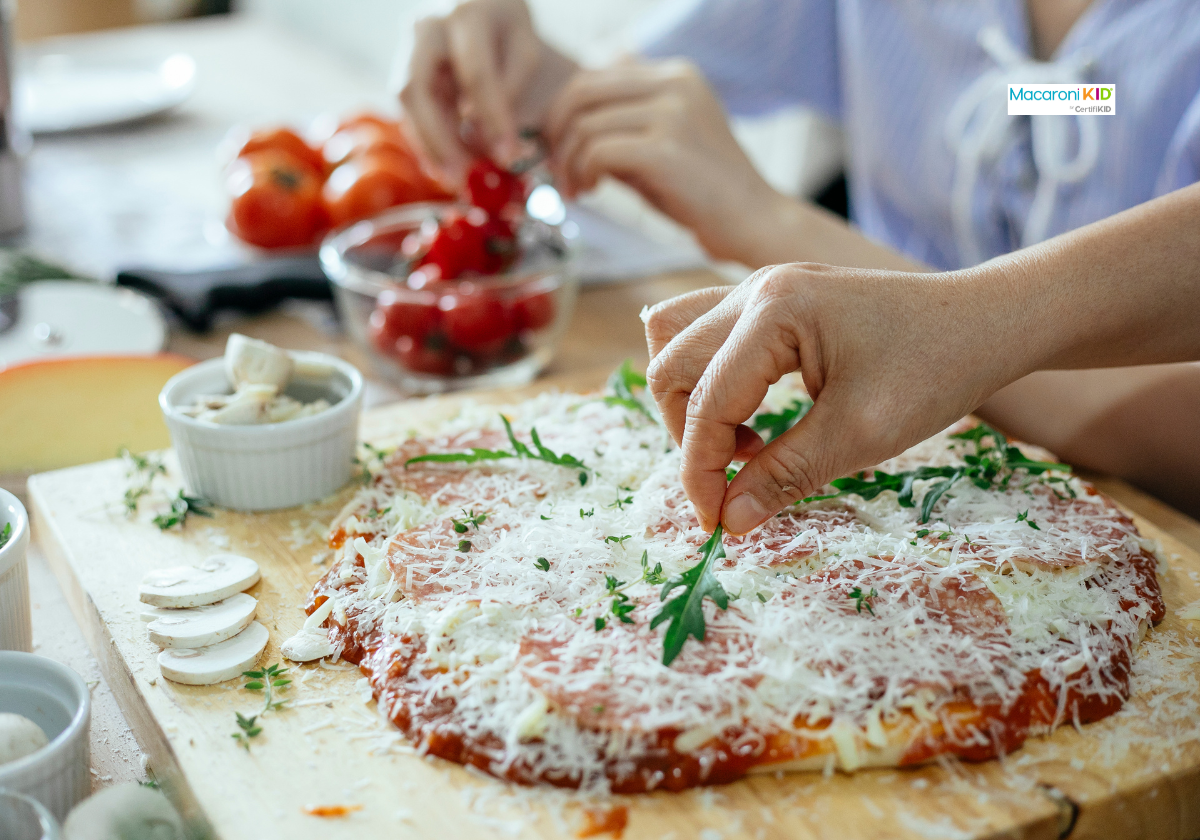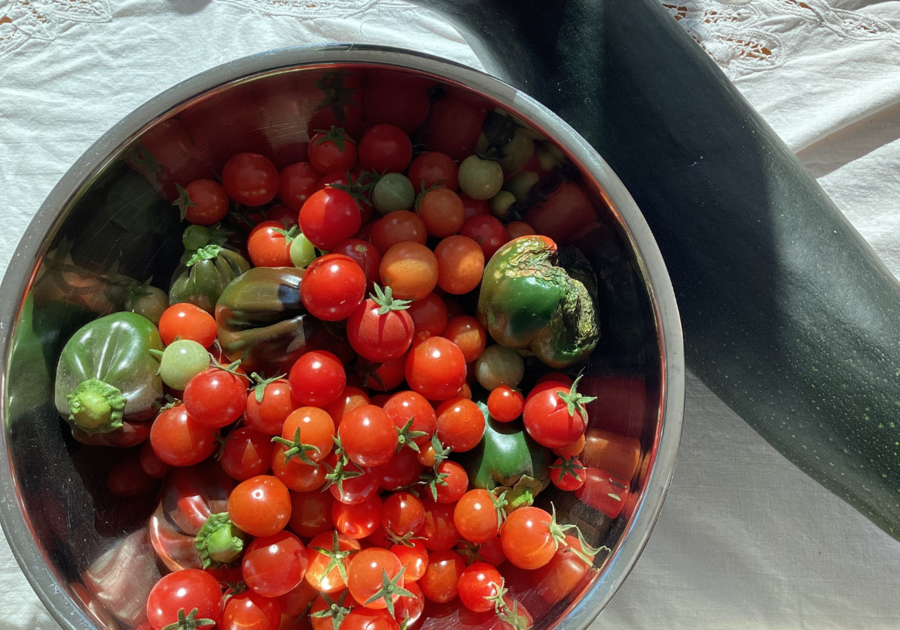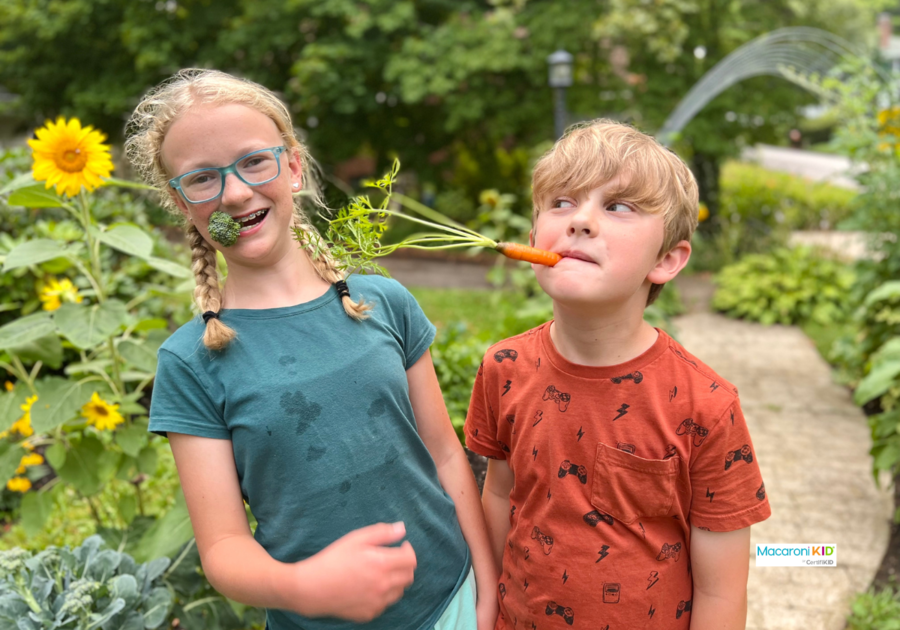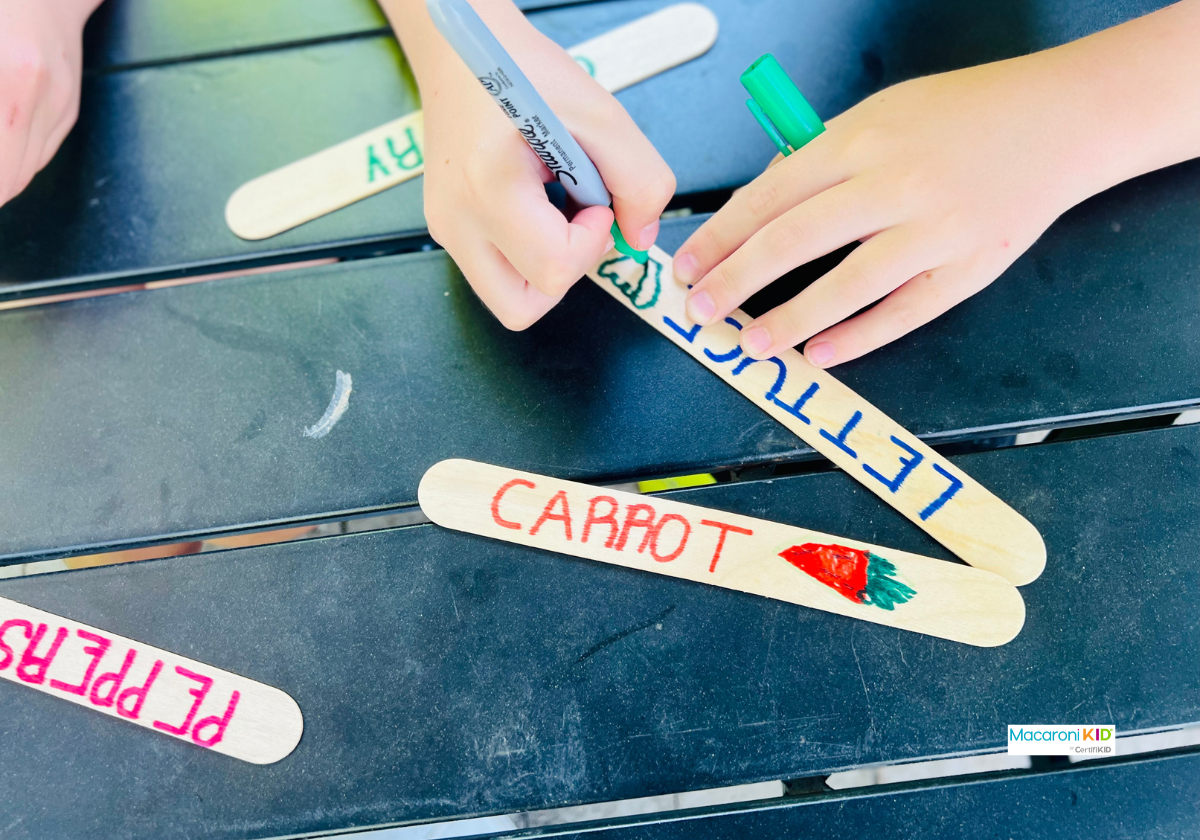Starting a family garden has loads of benefits. There’s the unbeatable freshness and health perks of eating veggies right from your yard. But more than that, it’s a fun family project, from the initial planning stages to enjoying the fruits (and veggies!) of your labor. It's a practical way for kids to learn about responsibility, nature, and science. Observing a plant's lifecycle — especially when it transforms from a tiny seed into something edible — is pretty cool and teaches kids a deeper respect for the environment. Plus, it’s a clever strategy to encourage outdoor time, moving them away from screens and into the sunshine. Read more about the benefits of gardening with kids.
Making markers for our garden.
Many of the veggies mentioned here can thrive in containers or in the ground, making gardening more accessible, even if you’re not up for digging a big plot in your yard.
Introducing a themed garden idea is a great way to kickstart your family's gardening journey, and get a child excited about gardening. Here are three kid-friendly themed garden ideas:
 Katerina Homes | Canva Katerina Homes | Canva |
Homemade pizza sauce and toppings are so yummy.
1. Pizza Garden
Turn mealtime into an exciting farm-to-table experience with a garden that grows all you need for the perfect family pizza night.
- Tomatoes: Easy to grow and fun to pick, tomatoes are a pizza staple for sauces and toppings.
- Bell Peppers: Add a splash of color and sweet flavor.
- Onions: Hardy plants that offer a lesson in underground growth.
- Garlic: Simple to cultivate and great for teaching about bulb plants.
- Herbs (Basil, Oregano, Thyme): Fast-growing and aromatic, these herbs introduce kids to a variety of flavors.
2. Salsa Garden
Create a zesty garden where kids can harvest ingredients for homemade salsa, learning about the different tastes and uses of each vegetable.
- Tomatoes: The base of any good salsa, tomatoes are versatile and provide a big harvest. Get a few varieties in different sizes!
- Peppers (think jalapeños, bell, habaneros): Offers a lesson in the variety of spice and heat, plus they grow in fun shapes and colors.
- Onions: Show the diversity of uses in cooking, from fresh to grilled.
- Cilantro: A fast grower, cilantro teaches about leafy herbs and their flavors.
Kara Murphy | Macaroni KID |
3. Salad Garden
Encourage healthy eating habits with a garden where kids can pick ingredients for their own salads, seeing — and tasting — firsthand how delicious growing your own vegetables can be.
- Lettuce & Spinach: Quick to sprout and harvest, these leafy greens are the backbone of almost all salads.
- Cucumbers: Fascinating for kids to watch grow, especially when they can pick and eat them fresh.
- Cherry Tomatoes: Sweet and bite-sized, perfect for little hands to pick.
- Radishes: Offer a quick reward, as they're one of the fastest-growing vegetables.
- Carrots: Fun to pull from the ground, providing a surprise reveal of their size and shape.
Gardening In The Desert?????
That may be what you are thinking right about now, as nice as all of the above sounds. But, YES, it's possible and I've got proof! The lead photo for this article is my bowl of veggies I recently harvested from my backyard garden right here in the West Valley. The cherry tomatoes are going gangbusters, the bell peppers so-so and, because I was away for 2 weeks over the holidays, I have some Monster Zucchinis. (Only one is in my photo but there are 2 more just as large!)
Here's a few tips that I can share with you. Some are from my first hand experience and some are what I have learned from following the AZ Plant Lady, Noelle, based out of Scottsdale. (https://www.azplantlady.com/)
1) Our winter is everyone else's spring. Which means get going on your garden NOW! That way your plants have time to grow and provide you with their bounty BEFORE the summer heat sets in (and probably wipes them out). There are still frost warnings so either start your plants from seed indoors and near a sunny window or buy plants that are already a decent size and plant those outdoors, covering with a light sheet when the weatherman says it's going to get 36 degrees or lower at night.
2) Think very carefully about the sun. Where does it shine? When does it shine (gentle early sun, hot afternoon sun, all day no escape from the heat sun)? Do walls or driveways make reflective heat that will affect plants negatively? Can you make or do you have a way to provide plants afternoon shade, especially later this spring when the temps start to rise? Where will you be comfortable working in your garden? (In terms of sunshine beating down on you.)
3) Be smart with your watering. Make sure it is convenient to water the garden since you will need to water it regularly. Also be sure that water and runoff from your garden are not interfering with desert and low water plants you may already have. Those low water plants will not like too much water so keep your watering zones separated.
4) Approach it with an open and experimental mind. Gardening is not an exact science and even the most experienced gardeners need to problem solve to keep the plants happy.
This growing season create lasting memories and learning experiences for your children with a garden. Whether it’s a few pots on a patio or a larger plot in the yard, what matters most is the journey of growing, harvesting, cooking, and eating together. Happy growing!





